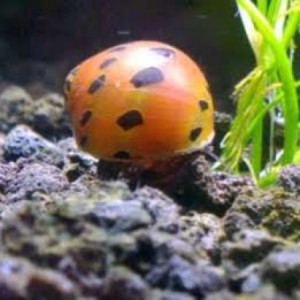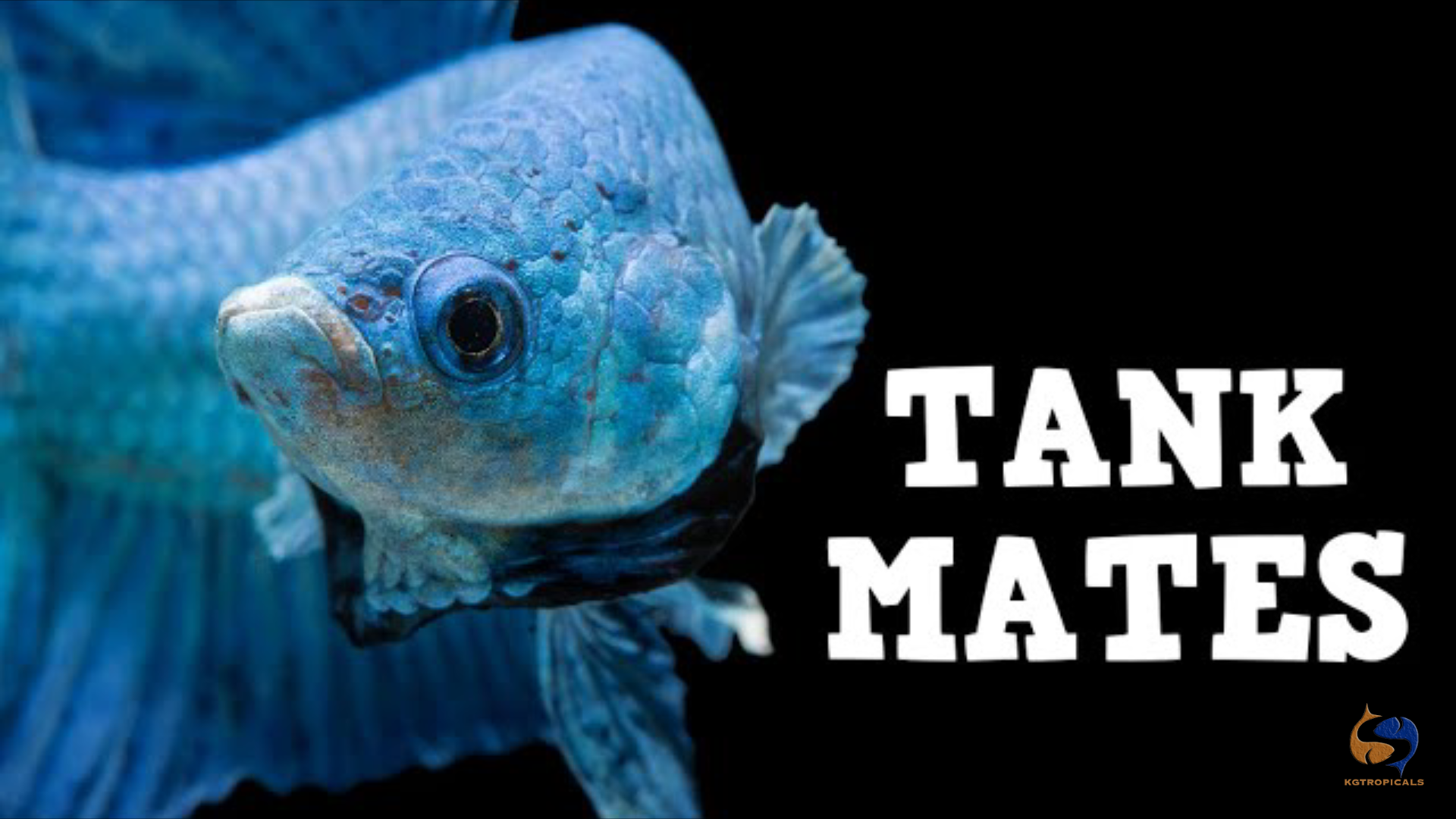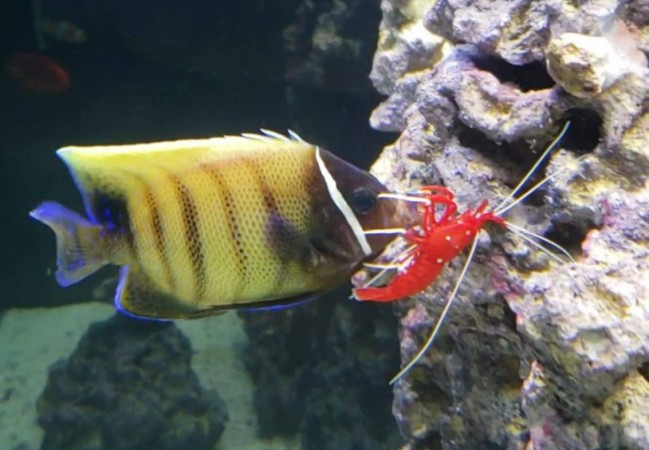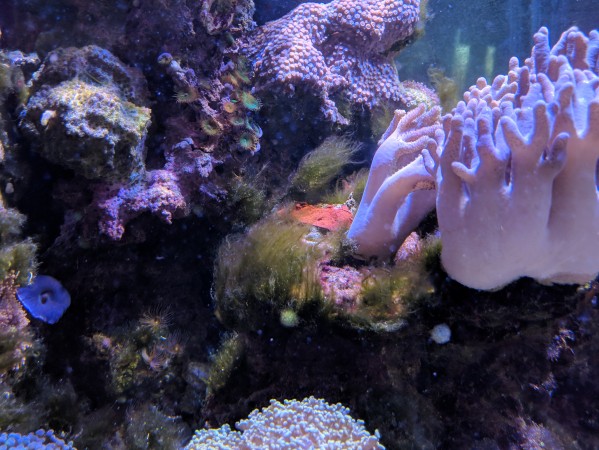- Name:
Nerita Snail, Tiger Blood
- Family: Neritidae
- Species: Snail
- Scientific Name: Neritina sp


General info about Nerita Snail, Tiger Blood
Nerite snails are extremely popular for their unique patterns and colors, as well as their practical benefits. They work hard to clean algae off of glass, plants, and decorations, they eat hair algae, and they keep your substrate clean and the correct color. In fact, nerite snails are widely believed to be the single best snail in the aquarium hobby for obliterating algae off of glass, rocks, live plants, driftwood, and other types of decorations. Tiger Nerite snails are absolutely stunning - their shells are a lovely dark amber color with small black markings that form encircling stripes. These snails share the simple yet elegant beauty possessed by their relatives, the Zebra Nerites.
While most publications state tiger nerite snails have a relatively short lifespan of 2-3 years, there is a significant amount of anecdotal evidence they can live far longer. It’s not unusual for people to keep these snails for 4-5 years, and some aquarists claim they can live up to a decade. But with that being said, a lifespan of 2-3 years seems to be pretty average for these snails. If a Nerite dies soon after being added to a tank it can be due to the stress of being transported, a significant shift in water parameters, or unhealthy water in the tank. Before adding snails to the tank, it may be a good idea to test both the tank water as well as a sample of the water that the snail is being transported in for pH, Ammonia, Nitrates, and Hardness. It’s better to know in advance whether there is a significant variance in parameters.
Nerite snails are incredibly docile and won’t bother any other inhabitants of an aquarium. Nerite Snails are completely peaceful, and therefore safe to keep with any fish, shrimp, live plants, or other snails. However, fish aren’t always peaceful towards these snails and any snail eating fish should be avoided. This includes most loaches(botia), puffer fish, and any large, aggressive cichlids. Also, many fish like gouramis and bettas will attempt to attack snails, but usually won’t be able to kill them – though they often injure them.
The average size of tiger nerite snail is 1 inch. With all nerite snails, it's a good idea to make sure the water line in your aquarium isn't too high, as these snails tend to climb up beyond the water line. Also, tiger nerite snail can sometimes escape from your tank, especially if you don’t have a lid. A tight fitting lid is a must. Keep an eye on your Olive Nerite Snails so you can find them quickly if they get out of the tank. Often, placing them back in, right side up can rehydrate them and keep them alive.
Nerite snails are very low-maintenance and rather hardy, making them perfect for beginning aquarium enthusiasts. They can survive in nearly any size aquarium – assuming all their needs are met. But since they are rarely kept on their own, it’s best to focus on the aquarium size requirements of their tankmates. However, on the off chance a person is keeping these snails in a species-only tank, then a 10-gallon aquarium would be more than adequate. Temperature range between 65° to 85° F and pH level range between 6.5 to 8.5 is necessary for the tank to maintain healthy lifecycle. They prefer a slightly hard water environment with 12-18 kH to prevent shell erosion.
Nerite Snails seem to enjoy being in an established planted aquarium. In an established planted tank, the water parameters have been given a chance to settle into a stable range and the tank has properly cycled. Also, the live aquarium plants continuously shed or discard plant matter into the water column, preventing the tank from ever being “too clean”. Nerites seem to be happy and content in tanks that are never “too clean”.
The average size of tiger nerite snail is 1 inch. With all nerite snails, it's a good idea to make sure the water line in your aquarium isn't too high, as these snails tend to climb up beyond the water line. Also, tiger nerite snail can sometimes escape from your tank, especially if you don’t have a lid. A tight fitting lid is a must. Keep an eye on your Olive Nerite Snails so you can find them quickly if they get out of the tank. Often, placing them back in, right side up can rehydrate them and keep them alive.
Nerita Snail, Tiger Blood Diet & Nutrition
Nerite Snails are herbivores and are widely known as one of, if not the most, voracious algae-eaters out of any snail. Nerite snails are often purchased for their algae eating abilities, but their diet should still be supplemented with other foods to keep them in peak health. The best food to feed them is a vegetarian sinking pellet. Their diet can also be supplemented with blanched vegetables, and they will appreciate zucchini medallions, cucumber, broccoli, and lettuce. Make sure to remove any uneaten food within 24 hours, before it starts to decay and foul the water.
They also need a decent amount of calcium in their water to maintain their shell health, which can be helped by feeding the snails foods rich in calcium (such as kale, spinach, and other greens), by floating a cuttlebone in the water, or by using additives.
Determining Sex of Nerita Snail, Tiger Blood
They are not hermaphroditic snails, so they are made up of male and female snails.
Breeding & Spawning Nerita Snail, Tiger Blood
Although they thrive in both freshwater and saltwater, they require brackish water to reproduce. Thus, they are quite incapable of overpopulating any freshwater aquarium. But if someone is interested in trying to breed these snails and wants a challenge, then they should start with setting up a brackish water tank. These fish will not breed in a freshwater or marine tank. Once the brackish water aquarium has been set up, a minimum of six nerite snails should be added. By adding six snails, it’s a virtual certainty there will be at least one male and female.
If you are interested in breeding Nerite snails and you have a tank with brackish water, we suggest using a calcium-rich substrate (such as crushed coral) to support shell growth in the young snails but it‘s not required if the water is hard enough. The water temperature should be kept around 79-80 degrees Fahrenheit to encourage breeding. Though to be honest, these snails rarely need encouragement and will often lay eggs even in freshwater, room temperature tanks, where they can’t possibly hatch. Once the snails are comfortable in their environment, they will lay eggs that will soon hatch into larvae without shells. The young snails will develop shells soon. Once the eggs have been laid, the baby snails should be moved to a marine tank. It’s very important that this tank has at least one good source of algae in it. After they have spent a few weeks growing – and it must be at least four weeks – they can then be moved back to a freshwater tank.
Nerita Snail, Tiger Blood Origin
Tiger Nerite snails come from Africa - specifically Kenya, Mozambique, Somalia, South Africa, and Tanzania.
Caution with Nerita Snail, Tiger Blood
Snails are very sensitive to copper, so watch out for copper if you use tap water in your tank. Avoid any food product, medication, or plant fertilizer that contains Copper of any form. Copper is toxic to invertebrates. Many commercial fish foods, medications, and plant fertilizers contain copper or more commonly copper sulfate. Always look at the ingredient list for any product going into the aquarium to ensure they are copper free. Nerite snails do not tolerate water with high nitrate levels as well.
Original Detail
| Name | Species | Family | Scientific Name | More Detail | Added by |
|---|---|---|---|---|---|
| Nerita Snail, Tiger Blood | Snail | Neritidae | Neritina sp | Nerite snails are extremely popular for their unique patterns and colors, as well as their practical benefits. They work hard to clean algae off of glass, plants, and decorations, they eat hair algae, and they keep your substrate clean and the correct color. In fact, nerite snails are widely believed to be the single best snail in the aquarium hobby for obliterating algae off of glass, rocks, live plants, driftwood, and other types of decorations. Tiger Nerite snails are absolutely stunning - their shells are a lovely dark amber color with small black markings that form encircling stripes. These snails share the simple yet elegant beauty possessed by their relatives, the Zebra Nerites. While most publications state tiger nerite snails have a relatively short lifespan of 2-3 years, there is a significant amount of anecdotal evidence they can live far longer. It’s not unusual for people to keep these snails for 4-5 years, and some aquarists claim they can live up to a decade. But with that being said, a lifespan of 2-3 years seems to be pretty average for these snails. If a Nerite dies soon after being added to a tank it can be due to the stress of being transported, a significant shift in water parameters, or unhealthy water in the tank. Before adding snails to the tank, it may be a good idea to test both the tank water as well as a sample of the water that the snail is being transported in for pH, Ammonia, Nitrates, and Hardness. It’s better to know in advance whether there is a significant variance in parameters. Nerite snails are incredibly docile and won’t bother any other inhabitants of an aquarium. Nerite Snails are completely peaceful, and therefore safe to keep with any fish, shrimp, live plants, or other snails. However, fish aren’t always peaceful towards these snails and any snail eating fish should be avoided. This includes most loaches(botia), puffer fish, and any large, aggressive cichlids. Also, many fish like gouramis and bettas will attempt to attack snails, but usually won’t be able to kill them – though they often injure them. The average size of tiger nerite snail is 1 inch. With all nerite snails, it's a good idea to make sure the water line in your aquarium isn't too high, as these snails tend to climb up beyond the water line. Also, tiger nerite snail can sometimes escape from your tank, especially if you don’t have a lid. A tight fitting lid is a must. Keep an eye on your Olive Nerite Snails so you can find them quickly if they get out of the tank. Often, placing them back in, right side up can rehydrate them and keep them alive. Nerite snails are very low-maintenance and rather hardy, making them perfect for beginning aquarium enthusiasts. They can survive in nearly any size aquarium – assuming all their needs are met. But since they are rarely kept on their own, it’s best to focus on the aquarium size requirements of their tankmates. However, on the off chance a person is keeping these snails in a species-only tank, then a 10-gallon aquarium would be more than adequate. Temperature range between 65° to 85° F and pH level range between 6.5 to 8.5 is necessary for the tank to maintain healthy lifecycle. They prefer a slightly hard water environment with 12-18 kH to prevent shell erosion. Nerite Snails seem to enjoy being in an established planted aquarium. In an established planted tank, the water parameters have been given a chance to settle into a stable range and the tank has properly cycled. Also, the live aquarium plants continuously shed or discard plant matter into the water column, preventing the tank from ever being “too clean”. Nerites seem to be happy and content in tanks that are never “too clean”. The average size of tiger nerite snail is 1 inch. With all nerite snails, it's a good idea to make sure the water line in your aquarium isn't too high, as these snails tend to climb up beyond the water line. Also, tiger nerite snail can sometimes escape from your tank, especially if you don’t have a lid. A tight fitting lid is a must. Keep an eye on your Olive Nerite Snails so you can find them quickly if they get out of the tank. Often, placing them back in, right side up can rehydrate them and keep them alive. |
PalaciosAn |
Changed by users
| Submitted Date | Submitted By | Status | Action |
|---|





